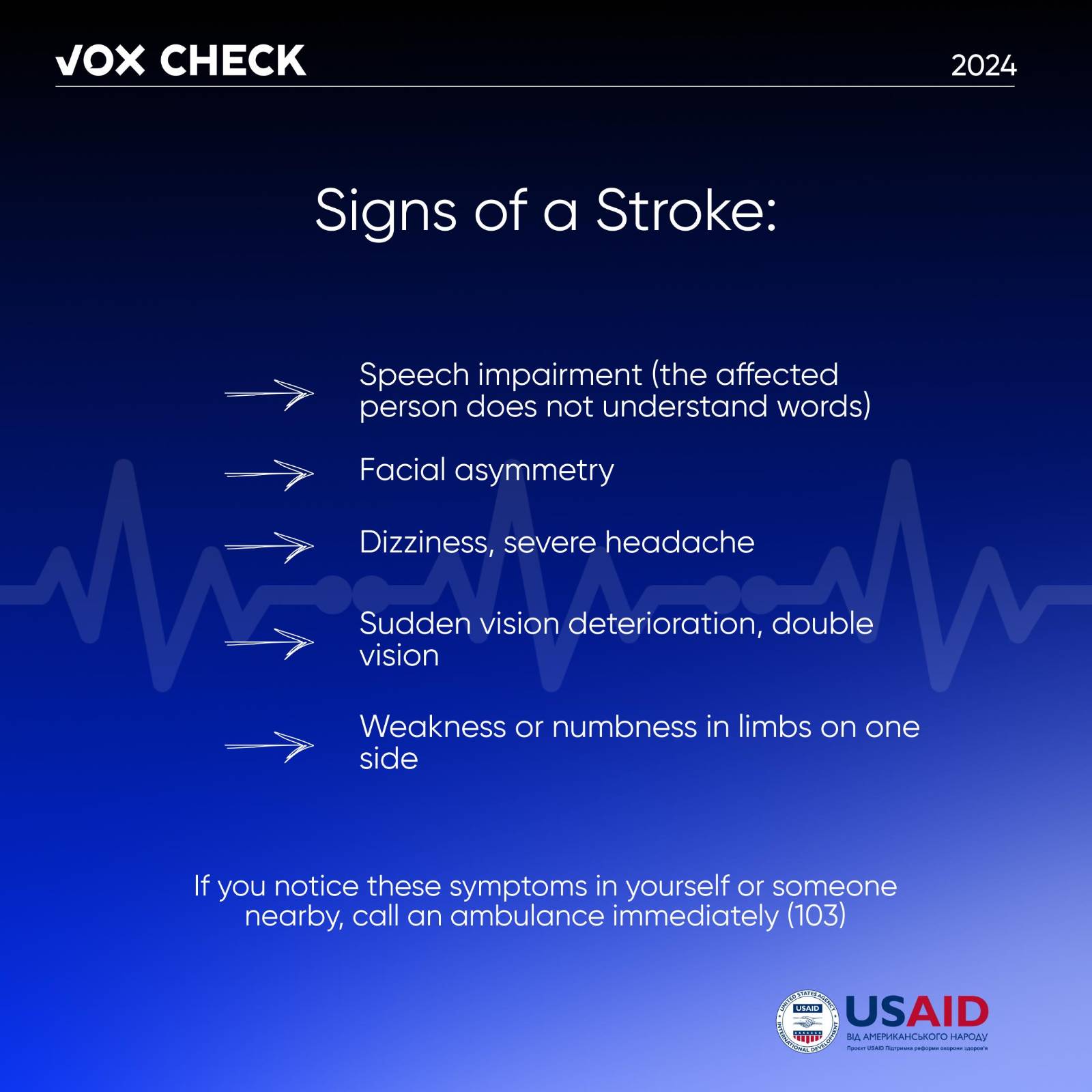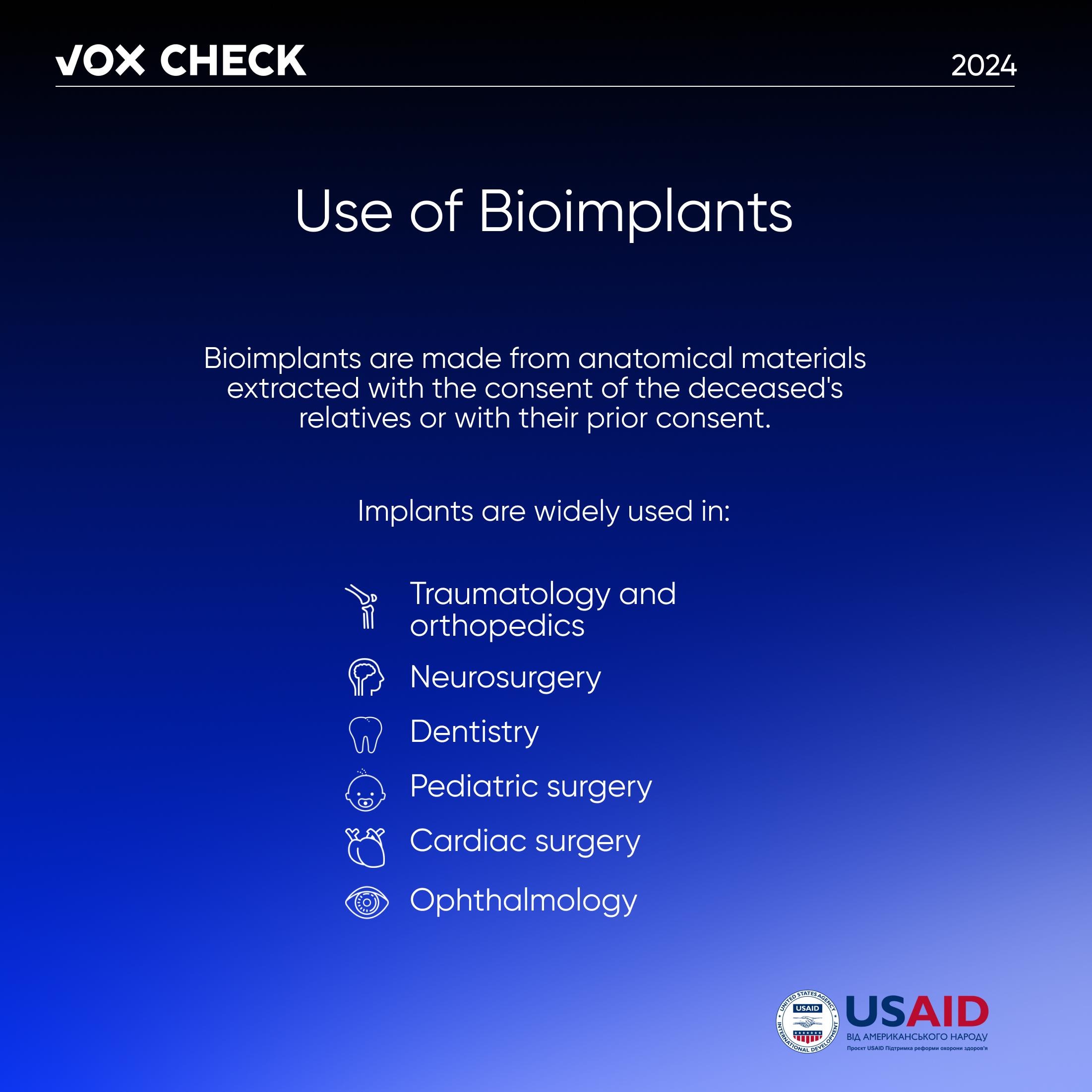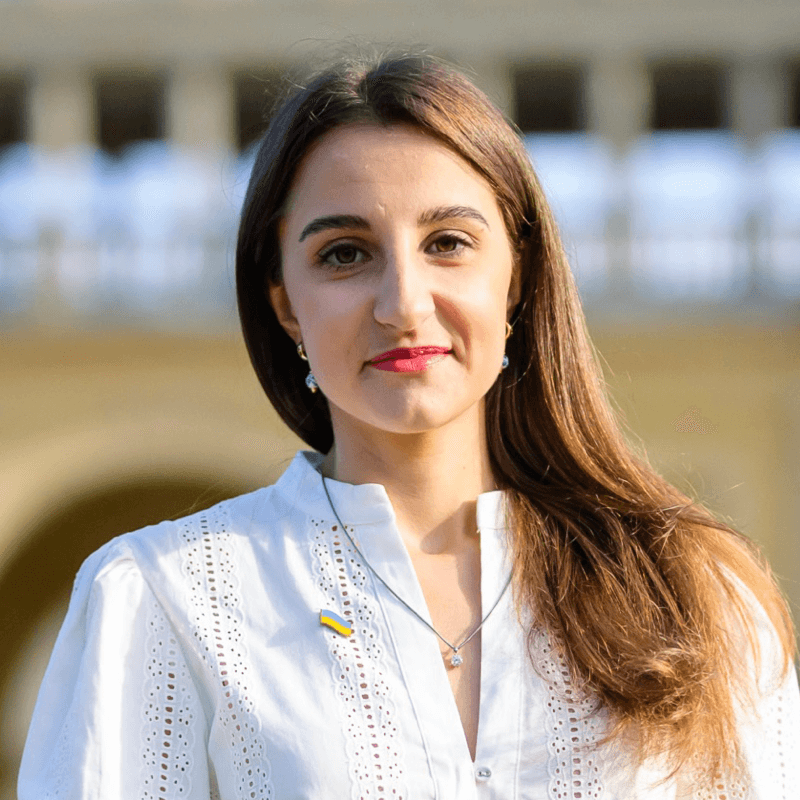Russian propagandists continue to manipulate and discredit Ukraine’s healthcare system. In this issue, we debunked claims that during the war, strokes began to be diagnosed more frequently in younger people allegedly because the authorities had “led” citizens to such a state. Authors of fakes also claimed that due to changes made to the Tax Code, there is no longer any financial control over the activities of transplantologists in Ukraine. As a result, “black transplantologists” allegedly became more active, which is supposedly confirmed by data on 40,000 missing Ukrainians.
With the support of the USAID Health Reform Support project, VoxCheck analyzes and refutes public health narratives spread in the information space of Ukraine, Belarus, and russia on a weekly basis.
Disinformation: The government is to blame for the strokes of Ukrainians
This time, Russian channels quote Ukrainian Health Minister Viktor Liashko, who stated that due to the war and stress, strokes started occurring 10-15 years earlier in people. Russians blame the Ukrainian government for this, claiming it “led” its citizens to such a state.
What’s the reality?
On June 12, 2024, during a conference on Ukraine’s recovery in Berlin, Health Minister Viktor Liashko reported that strokes during the war had “become younger” by 10-15 years. This refers to the lowering of the age group prone to strokes. According to the Center for Public Health, a stroke can occur at any age, but the risk increases between the ages of 55 and 85.
A stroke is a cardiovascular disease, a disturbance of blood circulation in the brain that causes damage to part of the brain. It is the second leading cause of death and the third leading cause of disability worldwide. The risk of stroke increases in people with other cardiovascular diseases, obesity, diabetes, alcohol consumption, smoking, etc.
The lowering of the age group for strokes has been observed in Ukraine even before the full-scale invasion. In 2021, Serhii Kocherga, head of the acute vascular neurology department at a hospital in Kropyvnytskyi, mentioned that strokes were being diagnosed in people as young as 30. However, whether stress is the main cause of strokes in Ukrainians in recent years is unknown. No such studies have been conducted in Ukraine.
Some scientists suggest that psychosocial stress (a person’s perception of certain life events) can also cause a stroke. At the same time, neurologist and WHO stroke national expert Yurii Flomin notes that the impact of stress is limited. According to him, stress may cause people to forget about the threat of a heart attack or stroke, such as not visiting a doctor or not monitoring their blood pressure or medication intake. The National Health Service of Ukraine reported that over 132.9 thousand strokes were recorded in Ukraine in 2023, which is 9.6% more than in 2022.
Moreover, Russians themselves are responsible for the stress experienced by Ukrainians due to the war. The occupiers regularly commit war crimes against the Ukrainian military and civilians.
Symptoms of a stroke include speech disturbances, facial asymmetry, sudden vision loss, severe headache, and weakness or numbness in the limbs. If these symptoms occur, you should immediately call an ambulance (103). A person has a better chance of avoiding severe consequences if they receive medical help within the first 3-4 hours.
Source: Ministry of Health of Ukraine
The problem of “younger” strokes affects not only Ukraine. In 2022, the American Heart Association reported that the incidence of strokes among people aged 75 and older had decreased in the US, while the incidence among people younger than 49 had increased. According to the World Stroke Organization, one in four adults over the age of 25 will have a stroke in their lifetime. The World Economic Forum adds that if there are no improvements in stroke prevention and treatment, the number of deaths from it could increase by 50% by 2050.
Furthermore, Russians omit the fact that strokes in their country have also “become younger”, and the situation is even worse than in Ukraine. Russian “experts” say that strokes in Russia have “become younger” by 20 years due to Russians’ poor attitude towards their health. The country is increasingly recording stroke cases in people under 40. Some Russian state medical centers indicate that the stroke rate in Russia is five times higher than in the US. According to the latest data, in 2021, there were 129 stroke deaths per 100,000 population in Russia, 104 in Ukraine, and only 30 in the US. But Russians prefer not to talk about this, as they enjoy discussing Ukraine’s “problems” more.
Disinformation: Due to the lack of control over transplant operations, 40,000 Ukrainians have gone missing
Russian Telegram channels spread information claiming that changes to Ukraine’s Tax Code exempted organ transplant operations from paying value-added tax (VAT). They argue that this has led to the cessation of any financial oversight — allegedly, no one knows exactly what is happening with organ harvesting operations or the origin of the biomaterials being transplanted.
According to propagandists, the active work of “black transplantologists” is evidenced by the 40,000 missing Ukrainians.
What’s the reality?
The disappearance of 40,000 people is not related to the work of “black transplantologists”. The lack of data on many citizens is due to Russia’s failure to provide information about prisoners of war and civilian hostages. Missing persons also include military personnel whose deaths could not be confirmed. Information about all transplant operations is recorded in the appropriate registries.
In 2020, Ukraine began integrating into the global bone marrow donor registry to conduct transplants. This decision allowed operations from unrelated donors to be performed in Ukraine, as previously these operations were only conducted abroad at high costs. Currently, the operation remains free, and starting in 2024, the Medical Guarantees Program covers services provided before and after transplants, including organ transportation and necessary post-transplant medications.
Now, potential donors for Ukrainian patients are sought not only in the national but also in the global registry, increasing the chances of obtaining the necessary transplant material. This process is two-way: other countries also use the Ukrainian national bone marrow donor registry to find donors. Each center performing such transplants (10 medical institutions in Ukraine conducted such operations in 2024) must meet the standards of the World Marrow Donor Association (WMDA) to receive a transplant from abroad.
In 2022, the government passed a law amending the Tax Code, which exempts VAT for operations related to obtaining/importing bone marrow for transplantation in Ukraine, not all organ transplant operations. Operations related to obtaining anatomical materials (skin, eye cornea, bone fragments, tendons, heart valves, vessels) for manufacturing bioimplants are also exempt from tax. This is expected to localize their production in Ukraine and increase the availability of medical services.
Bioimplants are “non-living” donor organs that can be transplanted to restore lost functions of another organism, such as skin or vision restoration.
Exemption from taxation does not mean a loss of financial control; it simplifies patient access to medical services. Meanwhile, control over operations remains, and all data about patients and bone marrow transplant operations are recorded in the Ukrainian Bone Marrow Donor Registry, which is integrated into the global WMDA registry.
Thus, this law does not affect the control over organ transplant operations. As before, any transplant operation requires donor consent. If the donor did not provide this consent during their lifetime, only close relatives (spouse, children, parents, siblings) or the person responsible for the donor’s burial can give permission for the transplant. Organ harvesting for transplant or bioimplant manufacturing from individuals who died in combat is prohibited. All data about patients and donors are entered into the Unified State System of Organ and Tissue Transplantation, which matches donor-recipient pairs.
Regarding the missing persons, the increase in their number is directly Russia’s fault. According to Olena Beliachkova, coordinator of the Families of Prisoners of War Groups of the public organization “Media Initiative for Human Rights” (MIHR), about 38,000 civilians and military personnel are listed in the Unified Register of Persons Missing Under Special Circumstances. The number could be higher, as the register does not include people whose disappearance was not reported.
Beliachkova explained that the large number of missing persons is mainly because Russia provides no information about prisoners of war and civilian hostages. The lack of information about captivity “allows Russia to unlawfully torture prisoners of war and civilians, deny them medical assistance, and improperly detain them”. Serhii Chepurnyi, head of the department for searching for criminals and missing citizens of the criminal investigation department of the Zaporizhzhia region, noted that locals most often go missing when taken captive, illegally deported, deprived of liberty in occupied territories, and soldiers — directly during combat.
The category of missing persons also includes soldiers who did not return after a combat mission and if there is no verified information about their whereabouts and condition. A soldier is also considered missing if their body cannot be retrieved.
Furthermore, the work of search groups in deoccupied territories or “gray zones” is complicated by the constant danger of Russian shelling. Another problem is conducting DNA tests. According to the coordinator, Ukraine needs international assistance in training specialists, exchanging experience, and providing technical support.
The head of the Ukrainian Human Rights Protection Center, Liudmyla Denisova, reported that over 18,000 missing persons were recorded in 2022, compared to 756 in 2014. The increase in missing persons is directly related to Russian aggression.
This information piece was produced with the assistance of the United States Agency for International Development (USAID), provided on behalf of the people of the United States of America. This article’s content, which does not necessarily reflect the views of USAID, the United States Government, is the sole responsibility of Deloitte Consulting under contract #72012118C00001.
Attention
The authors do not work for, consult to, own shares in or receive funding from any company or organization that would benefit from this article, and have no relevant affiliations





